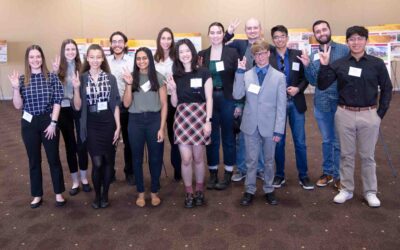Technology for twists and turns
ASU’s Majid Minary plots the road ahead for energy sector ceramics manufacturing
By Gary Werner
February 24, 2022

Many people think of ceramics in terms of dinner plates, kitchen tiles and bathroom sinks. But ceramics also comprise crucial components for electrical, electronic, medical, automotive and other technical applications. Such advanced ceramics represent a market of more than $100 billion in the US alone, and demand continues to rise.
“They succeed where metals and polymers fail,” says Majid Minary, an associate professor of mechanical and aerospace engineering in the Ira A. Fulton Schools of Engineering at Arizona State University. “Ceramics can tolerate harsh environments such as the high temperatures of heat exchangers at power plants and the corrosive content of batteries and fuel cells. So, they are indispensable for most of our energy systems.”
Advanced ceramics can be costly and time-consuming to manufacture. Also, traditional fabrication methods such as casting, molding and sintering generate relatively simple, symmetrical outputs. These limited geometries inhibit the technological innovation necessary to move the energy sector forward.
Conversely, additive manufacturing, or 3D printing, techniques can employ computational design to enable lower-cost production of ceramic devices in virtually any imaginable shape or configuration. Minary is enthusiastic about the potential they represent, so he has been working to support the realization of these methods.
“The idea started during one of my meetings, with Corson Cramer of the Oak Ridge National Laboratory, about the need to address this subject in a comprehensive article,” Minary says. “We knew we needed to assemble an international team of experts.”
So, they tapped the talent of a dozen fellow authorities from national laboratories, institutes and universities in the United States, Germany and Italy. The effort took more than a year to complete, and the result — titled “Additive manufacturing of ceramic materials for energy applications: Road map and opportunities” — has been published by the Journal of the European Ceramic Society.
The paper focuses on material selection and processing for energy sector ceramics, reviewing both traditional approaches and new opportunities for additive manufacturing technologies. Sections are devoted to potential for innovation with batteries, supercapacitors, fuel cells, smart glass, catalytic converters, heat exchangers and turbines as well as nuclear fission and fusion energy.
Energy systems mainly function through the interactions of fluids or gases with solids, and surface area is important to these interactions. Larger surface areas often mean higher efficiencies, especially when available volumes may be small—such as in a battery or a catalytic converter.
“Contradicting properties are sometimes needed, too,” Minary says. “For example, a high-pressure, high-temperature heat exchanger requires thin walls for better heat transfer. But the walls also need to be mechanically robust to tolerate high pressure.”
Hence, complex geometries are necessary to maximize surface areas while maintaining the mechanical stability of the devices. New additive manufacturing technologies distinctly offer the ability to reliably and affordably produce these complex twists and turns with ceramics.
Minary says the new paper went through extensive editing and refinement to avoid overtly complex technical details. The authors wanted to create a resource for academia, but also for industry, policymakers and funding agency stakeholders.
“We are pointing out the research and development advances necessary to achieve manufacturing technologies for more efficient and reliable energy systems,” he says.
Minary also notes that addressing these challenges requires teams of experts across many different fields, and he expects to draw on the broad expertise and resources devoted to ceramic materials, processing and manufacturing at ASU to help make those advances happen.
“Work within the Fulton Schools, such as the School for Engineering of Matter, Transport and Energy and the new School of Manufacturing Systems and Networks, is well-aligned to position this university at the forefront of developing technologies that meaningfully address the pressing needs of the energy sector.”
Fulton
Researchers
Majid Minary
Associate Professor
School for Engineering of Matter, Transport and Energy
Related Stories
ASU engineers earn 10 NSF CAREER Awards
Ten faculty members in the Ira A. Fulton Schools of Engineering have received NSF Faculty Early Career Development Program (CAREER) Awards in 2022
Harnessing the sun, powering the future
AMPED science and technology center at ASU is helping to energize the New Economy Initiative
ASU celebrates largest cohort of Grand Challenges Scholars
Grand Challenges Scholars pursue the traits and qualities needed to collaborate and succeed in a transdisciplinary and global environment
Empowered to make a difference
An electrifying start to her engineering journey helped ASU student Jayashree Adivarahan stand out to earn a Cadence Women in Technology Scholarship.



